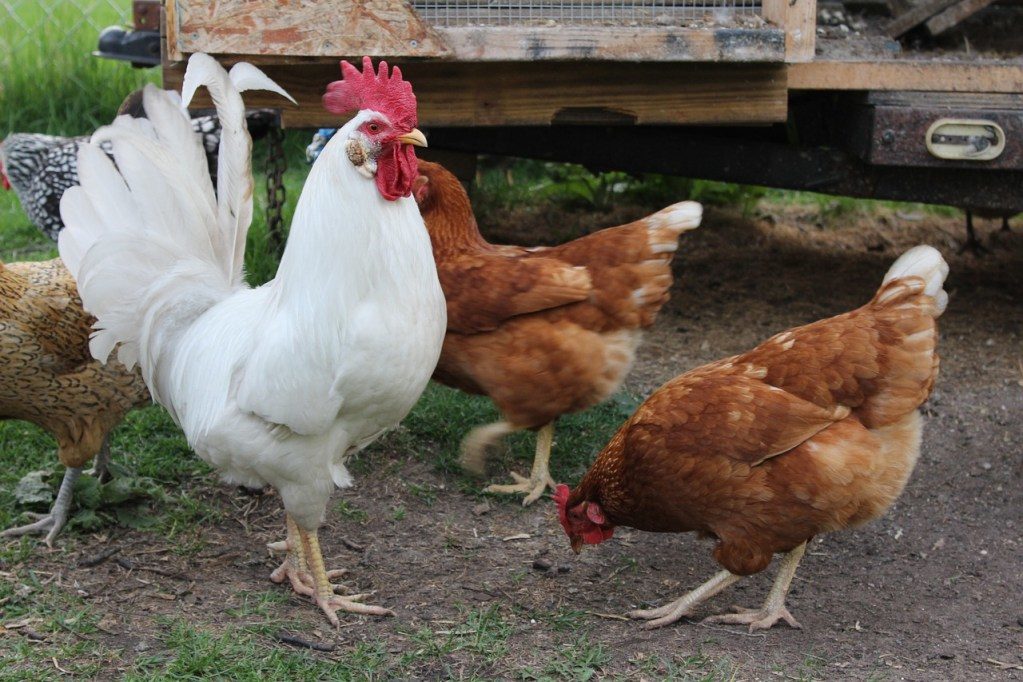Unless you happen to live in a cave, you've probably noticed that masculinity has undergone quite a thorough examination. Actually, examination is an understatement; demolition appears to be a more fitting description. Masculinity, in some quarters, is labeled a dirty word, with some labeling it "toxic." With the abuses revealed by the #MeToo movement and the misogynistic rhetoric of Donald Trump, the desire to use such a visceral adjective is somewhat understandable, but is it warranted?
From New York to New Delhi, significant debates are taking place. Many of these debates revolve around one question: what, in both an ethical and moral sense, does it mean to be a man? This question, among many others, wrestles with the concept of "toxic masculinity."
You've likely read a lot about toxic masculinity, an all too disingenuous term used to highlight men's dominant position in society, largely achieved through the subordination of women. Critics of masculinity claim that such noxiousness helps sustain and solidify men's dominant position in a patriarchal hierarchy. More recently, the phrase has been adopted and broadcast by fourth wave feminists and supporters like
The Good Men Project. Interestingly, the latter defines toxic masculinity as a "narrow and repressive description of manhood, designating manhood as defined by violence, sex, status, and aggression."
As a professor of psychology (and a man), I find the term "toxic masculinity" both offensive and misleading. Firstly, the term is depreciative-a pejorative against men. It implies that even the smallest amount of masculinity is lethal, poisonous; thus, by using the term, it invariably suggests that all men are toxic. Secondly, it's a sound bite, not a theory. "Toxic masculinity" may be a catchy, throwaway remark,
but it is not supported by scientific studies. The idea of toxic masculinity unfairly characterizes all men as products picked from the same assembly line. Is the world full of horrible men? Of course it is. As a collective group, men cause a lot of damage, both mentally and physically. However, different, more appropriate ways of calling out these monsters do exist.
Those of us who make snap-judgments about the toxicity of masculinity fail to identify the intricacies involved. Myopic in the extreme, the use of the phrase oozes ignorance and simplicity. After all, some of the behaviors associated with toxic masculinity-willingness to take risks and willingness to use violence, to name just two-are eulogized in some settings (such as in war). So, you ask, what language should we use when we're calling out men who exhibit behaviors that are, for a lack of a better word, toxic?
Maybe it's best if we stick to facts rather than using umbrella-like terminology. What's more, maybe it is safer and smarter to refrain from using gendered language when critiquing. Although the condemnation of misogyny and sexual harassment is clearly warranted, to say that these are obvious characteristics of toxic masculinity is dangerous.
Such generalizations are not acceptable when it comes to issues of race, religion, or sexuality. It is unjust, both in a sociological and moral sense, to chastise the whole by the actions of a few. An Asian man who commits a crime is not exhibiting "toxic Asianness"; a white man who spills coffee on a black man is not exhibiting "toxic whiteness." They are human beings, individuals with distinct identities and complex lives, not necessarily representative of the whole. Not only does the term "toxic masculinity" falsely incriminate all men, such rhetoric helps foster a seditious war on the entire concept of masculinity.
John Stoltenberg
John Stoltenberg, the radical feminist activist, author, and magazine editor, believes that if we hope to live morally sound and meaningful lives, we need to do one "simple" thing-renounce manhood forever. The Californian scholar famously (or infamously) paralleled the idea of "healthy masculinity" with the idea of "healthy cancer," a rather peculiar oxymoron. Stoltenberg, like millions of others around the world, sees manhood and masculinity as concepts fostered by a history of oppression. However, although there is some merit to his conjecture, masculinity is multifaceted, with multiple cultural constructions.
To label all male qualities or attributes "toxic" is not just puerile, it's patently false. Progressives have, for years, fought to establish a constructivist view of sex and gender, one established and perpetuated by a male dominated culture, but culture alone cannot provide a complete depiction of humanity; we must also recognize both evolutionary and biological factors.
There is a reason why biological and evolutionary studies are so well-respected-both offer insights that can shed light on aspects of masculinity that are not explained by social psychology or gender studies. Obviously, we know that certain physiological characteristics are more often associated with males than with females, namely hefty brow ridges, bigger jaw, inherently deeper voice, broader shoulders, and bodily and facial appearance best described as hirsute. A quick Google search will provide you with a host of popular narratives discussing the evolution of masculinity, especially how men have become more competitive and aggressive. This, many argue, is the reason why our species' is now undergoing an existential crisis of sorts.
However, fossil analyses make one thing abundantly clear: recent human evolution was made possible by an overall reduction in physical masculinity, think lower brow ridges, smaller jaws, less hairiness, as well as lower testosterone levels. Our ancestors were significantly more masculine and physically vigorous than modern day males. This scientific fact dismisses prevalent, all too popular notions that man survived because he excelled at killing wooly mammoths and clubbing females over the head.Modern human societies and civilizations are complex systems. It's possible that the aforementioned declines in masculinity were a prerequisite of sorts, allowing societies to emerge and flourish. Unsurprisingly, as average levels of masculinity weakened, the human race became relatively less antagonistic and more amiable. Increased sociability helped nurture cordial relations between individuals, resulting in greater levels of social complexity and collaboration. Consequently, this stimulated the development of language, the imparting and sharing of knowledge, as well as scientific advancements.
Although the pre-historic motivators of this decline are fiercely debated,
human evolution was made possible by an overall decline in average masculinity and an increase in civility. Decreasing levels of masculinity have equipped us to traverse an intricate and collaborative sociocultural terrain.
Nevertheless, evolution is a game-albeit a cruel, "Hunger Games"-type contest.
The Darwinian nature of survival centers around two essential goals, natural selection (surviving) and sexual selection (mating). Basic science tells us that, for sexually reproducing species, including humans, evolution has endowed males and females with universal mating partialities. From both an evolutionary and biological perspective, the so called "toxic masculinity" traits appear to serve beneficial, dynamic purposes. For example, female calling crabs favor males with excessively large claws; while hens favor roosters with larger tails. Furthermore, displays of aggression also serve a purpose. Male sheep and goats engage in head butting contests, the equivalent of two humans squaring up and trading blows. When it comes to mating, female goats, known as nanny goats, favor bucks (male goats) that emerge victorious. The reward for targeted aggression is sex. Are goats displaying toxic masculinity? Are hens capitulating to archaic concepts of masculinity perpetuated by the rooster patriarchy?

In humans, evolutionary psychologists have identified universal patterns of mating preferences. Studies show that women prefer men displaying more
masculine facial features, such as large jaws and prominent cheekbones. These men are perceived to be more dominant, and dominance is associated with genetic potency. High levels of testosterone signals status, but it also signals power and virility. Research shows that male teens with dominant facial features, such as square jaws and high cheek bones, report
more sexual liaisons at an earlier age than less dominant looking peers. Interestingly, men with baby-like faces are considered kinder, more honest, and more open-but also more naive and less physically capable.
As you can see, from an evolutionary perspective, the concept of "toxic masculinity" doesn't carry much weight. Women appear to be hardwired to favor men who favor risk, are socially officious, and who display patterns of behaviors that allow them to climb the social hierarchy ladder.Of course, the ideal man, if such a thing even exists, must be more than a glorified, chest-thumping ape. He must be rugged yet sensitive; macho yet considerate; forceful in some pursuits and peaceful in others. Just think of the male archetype in every romance novel ever written, a literary form almost exclusively marketed to and consumed by women. A strapping prince who loves his mother, he is a bold risk-taker who also happens to write poetry. By day, he defeats bad guys, overpowering them with his bulging biceps; in the evening, after doing 1000 pushups, he dons his apron and cooks up a mean lasagna.
And what about Hollywood? Take the movie "Fight Club," for example; there is a reason why Tyler Durden, played by the inimitable Brad Pitt, is so universally loved. Men want to be him, women want to seduce them. Durden's archetype ignites desire in women and jealousy in men.
To conclude, men are inundated with missives highlighting the negatives of masculinity. 2018 has been a year where men have started to engage in a sort of self-castration, distancing themselves from many behaviors that have served an evolutionary purpose. Buddhism and Taoism, two of the world's oldest and most respected traditions, teach us that the world manifests itself in schisms-think yin/yang, masculine/feminine. C. J. Jung, a scholar of both traditions, contested that humans contain both a masculine and feminine side (what he called the anima and animus). According to the Austrian, it is only by deliberately and purposefully developing both of these that we become fully conscious, fully aware, fully human. This concept is not to be confused with gender neutrality; instead of seeing gender as some sort of spectrum, Jung argued, we should view it as two spectrums. There is an inner masculine and feminine in each of us, both necessary for a state of equilibrium, and true meaning comes from incorporating both of these elements in ourselves.
John Glynn is a psychologist from Ireland, currently residing in Bangkok, John is passionate about two things in life - Guinness and writing. Follow him on Twitter @Irishdawg1916
Comment: See also: